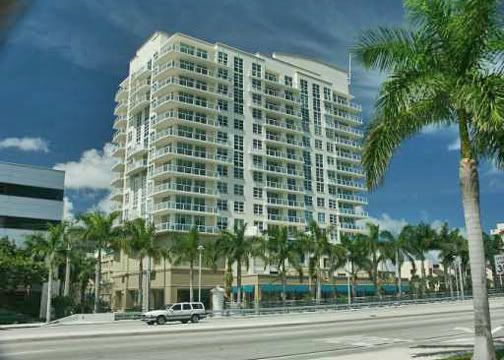After almost three years of investigating alleged predatory lending and fraud cases for primarily Spanish speaking clients in Monterey, Santa Cruz, Santa Clara, and San Benito Counties, I came to the startling conclusion that over 98% of those who had lost or were losing homes to foreclosure were involved in some type of fraud scheme. This led me to conduct some research. I found that with the encouragement of lending banks, vast numbers of unscrupulous mortgage brokers and appraisers were committing fraud, often with the knowledge if not assistance of their clients.
While the widespread fraud schemes and tactics utilized were sometimes elaborate and some times crude, all were at least initially successful, if success means a house to own and/or money in your pocket. How did this happen? People who could never have afforded homes with a conventional loan were provided the opportunity to become property owners with no money down and no proof of income. This created an opportunity to speculate in the real estate market with minimal or no monetary risk. And, with no fear of being sued, criminally charged, or losing licenses to operate, many mortgage brokers and real estate agents went to extremes putting people in homes they could not afford. All the prospective home buyer had to do was sign on the dotted line. Fraudulent conduct rose to epic proportions.
To comprehend the blatant fraud that was being committed, and ignored by the California Department of Real Estate, (D.R.E.) district attorneys and other police agencies, you only have to ask yourself a simple question. How many people do you know who have walked into a Ferrari dealership and were handed keys to a $180,000 Highway Patrol- attention-grabbing red F-430 after they told the salesperson, “Hey I want to buy that mean red machine, but I don’t have a down payment and my wife and I earn a combined annual income of less than $20,000″? Then, how did a California couple employed at a sandwich shop earning a combined annual income of $35,360 purchase a $628,000 home without a down payment and with one hundred percent financing? Or, how did a California seasonal worker purchase a $598,000 home with no down payment and with one hundred percent financing while earning $8.76 per hour at a lettuce packing shed in Salinas? How did the lenders expect the lettuce packer and sandwich makers to meet $4,000 plus monthly mortgage payments, or did they? And, how did the lettuce packer and sandwich makers actually think that they could afford even the teaser mortgage rates of $1,800 per month, or did they? The sandwich makers and the lettuce packer are not exceptions to the rule, but rather the majority. And they are real people; they were my clients.
The majority of the news media, economists, and legislators either do not have a concept as to what actually occurred in the mortgage crisis, or they are intentionally misleading the public. A couple years back, I predicted a severe recession. I had been asked to speak at several functions by the California Association of Mortgage Brokers, National Association of Hispanic Real Estate Professionals, and the Santa Cruz County Board of Realtors. The attendees laughed when I made the predication. The housing market was still hot but, suspiciously at the same time, homeowners were defaulting on their mortgage at a record pace. The real estate professionals’ general response was that the problem was temporary and that in a year things would be back to normal. They didn’t want to hear that the houses were so overvalued that even middle class persons could not afford them, especially since the majority of their clients were working class people making well below middle class wages.
Easy money and inflated appraisals are the reason why property values spun out of sight and then rapidly declined and are still declining. Property values were exaggerated for several reasons. The mortgage brokers that people were relying on to help them had a vested interest in closing the deal at any cost because they were going to make money regardless if the borrower had the means to repay the loan. The greater the loan amount, the more money unscrupulous mortgage brokers earned. People with little or no money began purchasing homes at a record pace, some offering to pay more than the asking price, further inflating property values. As property values increased, owners soon resorted to refinancing constantly. Appraisals were falsified so borrowers could pull out cash, most of the time leaving homes with little, if any equity. My clients routinely pocketed $50,000, $60,000, $70,000 or more in refinance transactions months after purchasing properties. These were the very same people who couldn’t even afford a down payment or the mortgage payments. Some of the cash was spent on vacations and vehicles, some invested in other real estate.
The escalating bidding war to purchase homes has ended leaving home values in question. Ask yourself what your property is worth today. The answer is, what you can sell it for, and more likely than not, your property will have to compete with a nearby home in foreclosure. With so many foreclosures and a tightening credit market, prices continue to fall on a daily basis. But, let’s say you can afford a ten percent down payment on a $400,000 home. Why would you purchase the home today when there is no indication when property values will stabilize? You could easily loose the $40,000 down payment in less than six months. When will property values stabilize? Knowing what actually occurred, it will be at least five years before we hit the bottom.
So most of this you have probably heard before. But I learned something more by looking at hundreds of loan applications and documents given to me by clients claiming they were lied to and cheated by their mortgage brokers. But first you should ask why people come to me, a private investigator, instead of to an attorney or public agency for assistance?
The majority of district attorneys and police agencies has little, if any, knowledge of mortgage lending and real estate practices and regulations, and therefore was deemed worthless even by actual victims of fraud. For example, in 2007 the Santa Clara County District Attorney’s Consumer Fraud unit had not made one arrest for fraud and/or predatory lending practices in foreclosure related cases. This is the norm in most counties throughout California. The California Department of Real Estate (D.R.E.), until just very recently, would not even respond to complaints of unlicensed activity. Their response was that they only regulate licensed persons. If the individual didn’t have a license, what could they do? Yet in 2006, ignoring my calls and written complaints, they went as far as providing a license to a previously unlicensed woman who had been a “loan consultant” on one of my fraud cases. I reported her for fraud to both the D.R.E. and Monterey County District Attorney. I provided them with a 7 page investigative report with verification that she had conducted business without a license. She had even paid restitution to one of my clients after being caught threatening her with deportation if the client complained about the loan. Less than six months after I submitted my report, the loan consultant was provided a real estate license to operate.
So I turn back to my question, why did the people come to me, a private investigator? After interviewing and re-interviewing people, and checking and cross checking documents, I came to the realization that my clients believed that a threat of an investigation would coerce mortgage brokers, or other parties to the loan transactions, to give them the money promised to them in their deals. In a nutshell, it’s hard to recover damages if you’re in on the fraud.
In one case that I was hired to conduct an investigation, an unemployed eighty-year-old blind and diabetic man was unknowingly sold a $680,000 home by his granddaughter’s husband who had refinanced the home several times and had depleted all of the equity in the process. With the assistance of an unlicensed “Loan Consultant” and unscrupulous mortgage broker, they falsified the grandfather’s date of birth (he was now 45 years old) and his income (it was stated he earned over $100,000 as the owner of a bookkeeping service) on the loan application. The appraiser inflated the value of the home. The mortgage broker and his unlicensed “Loan Consultant” profited almost $20,000 in loan fees, and over $27,000 (4%) for selling the home. The granddaughter’s husband profited $80,000 in the sale. The eighty-year-old grandfather, who had nothing to lose but his credit, immediately lost the home in foreclosure. The granddaughter’s husband became enraged when he determined that the mortgage broker charged him a fee to sell the home. He wanted all or a portion of the $27,000. The granddaughter’s husband was the client who came to me claiming the mortgage broker had wronged him.
There are the clients that “loaned” their credit and signatures for a price, and then complained when they did not receive the payments promised or when their credit was ruined because the buyers they had never met failed to make the payments. Every client that came to me crying predatory lending had claimed that they earned over $100,000 as business owners on their loan applications. But in reality they were maids and maintenance men, dishwashers and sandwich makers earning minimum wages. They came to me claiming they had been deceived about the payments. But the real problem was that they had been led to believe that they could refinance in a year when the payment on their adjustable rate mortgage adjusted upward, and they suddenly found themselves with a three-year prepayment penalty. Their loan consultants had made extra money putting them into a prepayment penalty loan, but neglected to explain to them that they would be penalized when they refinanced. But the clients didn’t stop and think about the fact that they had falsified their incomes on their loan applications, and that they should never have been given the initial loan, much less a refinance. These are just a few of the scams, believe me there are many, many more.
Why did lenders began giving out money like drunken sailors? I theorize that an attempt was made to forestall a recession in 2002, and resorted to a ponzi-loan sharking type scam so initial investors in the know would profit millions of dollars. The others, the flippers, and the ones that were misled to believe they could make a quick buck from the American Dream, were left holding the bag. What was not taken into account and anticipated was the financial devastation that the fraud would leave in it’s wake.
What should alarm every tax payer who will help bail out these criminals is that few lawsuits are being filed and few people are going to jail. Although, we may never experience this type of fraud fiasco again, both the real estate and mortgage industries are in dire need of regulatory changes. California’s Department of Real Estate should also be reorganized. The D.R.E. should be empowered to settle and mediate claims of predatory lending and fraud. And, they should also require licensees to be insured and bonded, and that their license is printed on all business cards. Will this prevent fraud completely? Absolutely not, but it will deter the conduct that has been prevalent in the industry.
I realize that my observations and opinions will be questioned and maybe create a big brouhaha, because they will ask what do I know? I am only a gumshoe.
source: offshoreblog.net
link to the original post:
http://offshoreblog.net/what-do-i-know-i-am-only-a-gumshoe/
Fort Lauderdale Blog and Real Estate News
Rory Vanucchi
RoryVanucchi@gmail.com
http://waterfrontlife.blogspot.com
www.FortLauderdaleLiving.net
















